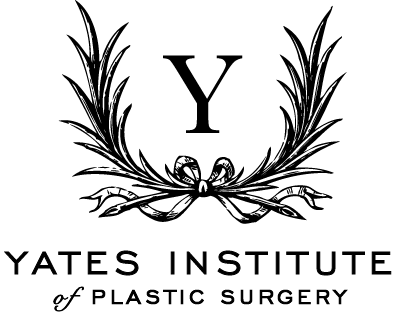5 Questions You Always Wanted To Ask About Breast Implants
Breast implants surgery is an option for women who desire to enhance the aspect of the breasts for aesthetic purposes. Breast implants have been used for decades and they are the only efficient and safe method to get bigger breasts and the shape of your dreams.
Women choose to resort to breast augmentation surgery every day, all over the world and many of them have specific questions. Here are 5 questions you always wanted to ask about breast implants:
1. What are the main types of implants used in breast augmentation surgery?
a. Saline breast implants are filled with a saline solution and are approved for women over 18 years old
Their use is safe for the human body because if they break, saline water would be absorbed by the body naturally.
Saline breast implants have lost their popularity due to the advent of silicone breast implants. However, they remain an affordable option for patients who want to improve the appearance of their breasts, giving them a uniform and firm appearance. In addition, the incision is smaller in operations with saline breast implants.
Saline breast implants are filled during the operation. This allows the volume to be adjustable, a good option for women who do not have equal breasts.
b. Silicone breast implants are filled with silicone gel, being suitable for breast augmentation in women over 22 years old
These are the most common breast implants on the market. The silicone breast implant is the softest and most natural choice of implant, being entirely round. Implant ruptures are difficult to notice because the breast retains its shape.
Unlike surgery with saline breast implants where the incision is small, the incision will be more significant when silicone implants are used. However, an experienced plastic surgeon will be able to mask the scars so they are barely visible when they heal.
2. How is the surgery performed?
The surgery is performed under general anesthesia and lasts 1-2 hours. The length of the procedure depends on the type of the incision, the implant chosen and the placement of the implant. If the breast augmentation surgery is associated with other procedures, such as a liposuction, a tummy tuck or an arms lift, the intervention will take longer.
3. Do I need to change my breast implants after some time?
The most crucial aspect that any person who decides to have a breast augmentation operation with silicone implants must consider is the fact that breast implants do not last a lifetime, and there is a possibility that they need to be changed at some point.
This time depends on the person. There is no set time for all patients. It all depends on the quality of the implant, how the breasts change over time, how the patient's body received the implant, the patient's lifestyle, and sometimes luck.
Certain complications can deem the breast implants replacement procedure as necessary. The rupture of the implants after an accident, capsular contracture leading to breast deformity or even an infection that occurs after the surgery are just some of the reasons.
4. What is post-surgery care, and when can I see the results?
The time required for recovery and the intensity of the pain varies from patient to patient, but the discomfort is not significant. Most women are mobile and able to handle self-care activities on their own after the first two days and can return to work one week after surgery (without physical exertion). Painkillers are used to relieve pain in the first days after surgery, and the bustier and elastic band used to support the breasts limit edema and reduce discomfort. Women who have larger breasts preoperatively or have a degree of breast ptosis experience slightly more pain than those with tiny breasts because their tissues allow more accessible accommodation of implants without relaxing too much.
After the surgery, of course, you will see that the breasts have increased in volume and shape has changed, but you must keep in mind that trauma to the tissues during surgery causes edema; sometimes bruising can occur, the tissues are stretched, and tense.
It takes some time until the pectoral muscles will relax and allow the implants to come down quickly until the edema disappears and the breasts will no longer be solid and tense. Usually, this happens in the first 1-2 months postoperatively, but the end result is good not to evaluate six months after surgery. These six months after surgery allow the scar tissue around the implant to form a capsule with sufficient strength to stabilize the position of the implant and the shape of the breast, and it can be assumed that the result will not change too much after this time (of course, in the absence of any complications).
5. Are there any risks and side effects of breast implants surgery?
Infection
The risk of infection is present in the first month after breast implant surgery, but after this period, it disappears permanently. To reduce this possible complication, avoid water in the first weeks (protect your breast scars from moisture), use only sterile dressings, and follow the doctor's instructions.
Strengthening the immune system before surgery plays a vital role in preventing infections, so it is good to eat correctly and have a healthy lifestyle. In some situations where the condition becomes severe, the implant must be removed. A few months after healing, the implant can be reintroduced. Another clarification that must be made is that the infection after the operation increases the risk of capsular contracture.
Hematoma
A hematoma is the accumulation of a quantity of blood in the pocket of the breast implant. When the amount is small, this is within the usual limits, but measures such as drainage must be taken in the case of a large hematoma. If the hematoma is not treated correctly, it can lead to capsular contracture and infection.
To avoid this complication, it is necessary to perform the blood tests required by your doctor. If they reveal a possible blood clotting disorder, it is mandatory to give up the operation until the problem is resolved.
Scarring
Whatever the established method of introduction and the type of incision, in order for the scars to heal quickly and be less visible, it is suitable for smoking patients to stop smoking at least two weeks before the operation. After the operation, the scars will be rougher to the touch and will have a pinkish color. This will last for several months, but they will begin to turn white and eventually fade and become almost invisible. For quick and satisfactory healing of scars, the esthetician surgeon will recommend certain creams and ointments for the patient.
Also, sun exposure can affect the evolution of scars in a negative way. That is why it is good for the patient to avoid direct exposure of the breasts to the sun about 6-9 months after the operation. It should also be specified that the speed in the healing of scars after silicone implant surgery is directly influenced by skin quality (genetic factor).
Final words
The most important thing about this surgery is desire and personal decision. This operation's emotional and psychological benefits are the increase of self-confidence by achieving a new "look."
Breast implants don’t come with a lifetime warranty. You may need to remove or change them for several reasons. The best way to ensure the quality and longevity of breast implants is to turn to a certified and experienced plastic surgeon and strictly follow all postoperative recommendations.


